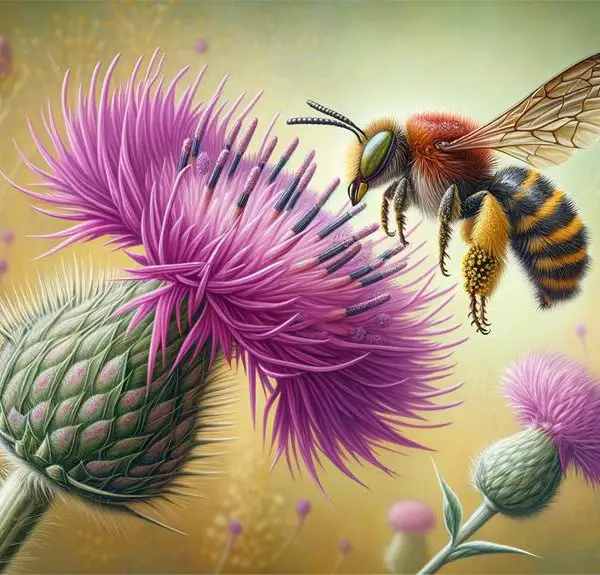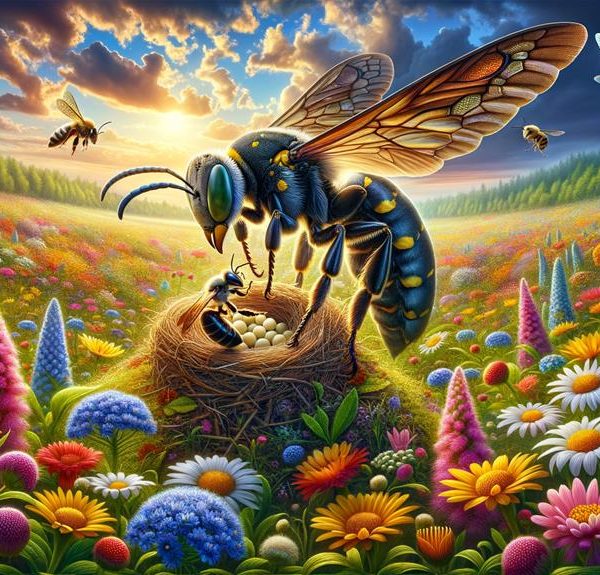Swim into the intriguing world of Sweat Bees and Cuckoo Wasps, unmasking their unique survival strategies and essential roles in our ecosystem.
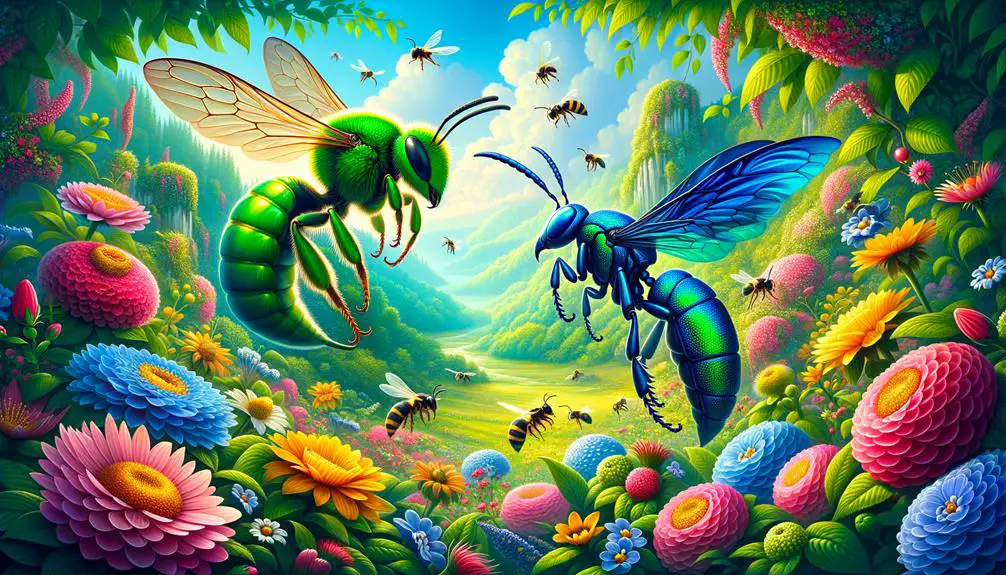
Sweat Bee Vs Cuckoo Wasp
Have you ever wondered about the fascinating world of insects, specifically the intriguing tale of the Sweat Bee versus the Cuckoo Wasp? It's a narrative filled with strategies of survival, adaptations, and their respective roles in our ecosystem.
From the Sweat Bee's unique attraction to human perspiration to the Cuckoo Wasp's notorious kleptoparasitic behavior, there's a lot to uncover. Now, imagine diving deeper into their unique characteristics and understanding how these differences define their existence.
Intrigued? Stay with us as we embark on this captivating journey.
Understanding Sweat Bees
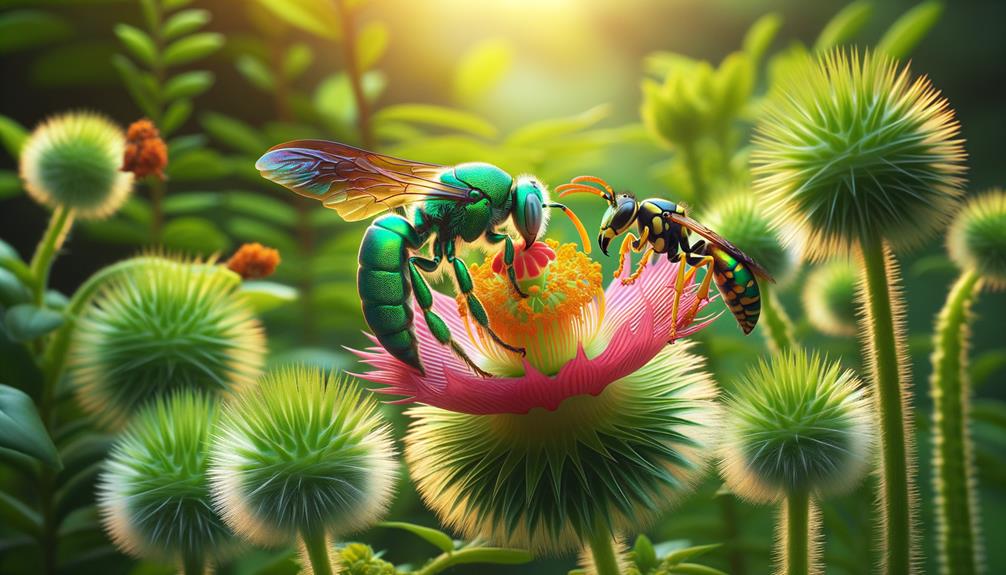
Diving into the world of entomology, you'll find that sweat bees, scientifically known as Halictidae, are a fascinating group of insects with unique behaviors and characteristics that distinguish them in the bee kingdom. They're aptly named for their attraction to human sweat, which they depend on for essential salts and moisture.
Your curiosity might lead you to question how they've adapted to such a peculiar diet. Sweat bees have developed specialized long, lapping tongues that allow them to efficiently extract salts from perspiration. They're not exclusive to sweat, though. They also forage on nectar and pollen, playing a vital role in the pollination of various plants.
While their diet is intriguing, their social behavior is equally captivating. Unlike many bee species, sweat bees exhibit a range of social structures, from solitary living to complex eusocial colonies. This flexibility allows them to adapt to a wide range of environmental conditions, demonstrating their resilience and versatility.
Their metallic green, blue, or bronze bodies may be small, but they make a significant impact in our ecosystems. So next time you encounter a sweat bee, remember, there's more to this insect than meets the eye.
The Intriguing Cuckoo Wasp
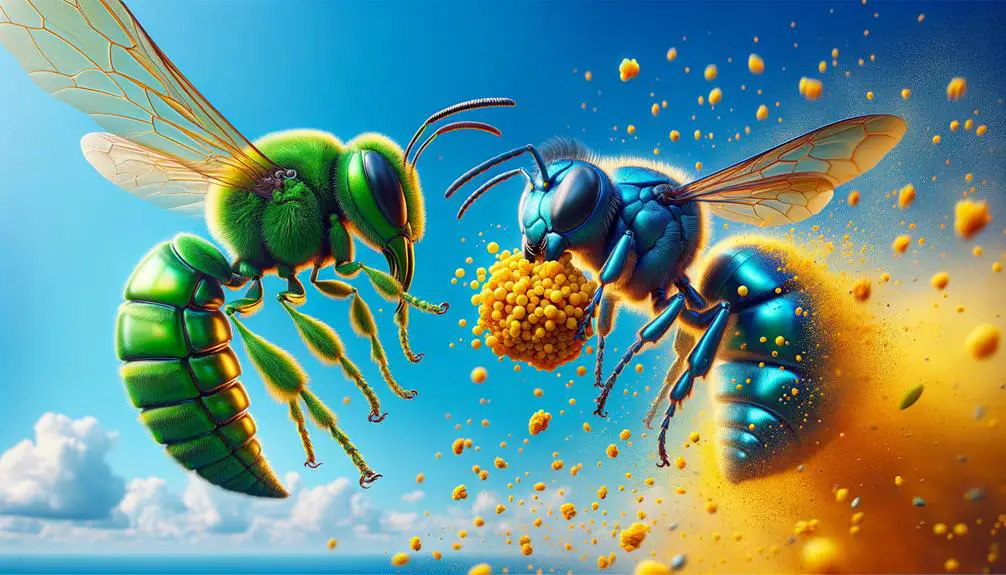
Shifting your gaze from the sweat bees, you'll find another captivating creature in the insect realm – the Cuckoo Wasp, a creature well-known for its unique parasitic lifestyle. Unlike most bees that create their nests, the Cuckoo Wasp adopts a different approach. It's what you'd call a 'cleptoparasite', sneaking into the nests of other insects, primarily bees and wasps, to lay its eggs.
The Cuckoo Wasp's larvae, once hatched, feed on the host's larvae and their food provisions. This behavior is known as 'brood parasitism'. Their life cycle doesn't revolve around gathering pollen or nectar but depends entirely on the efforts of other insects.
You'll also find that Cuckoo Wasps are rather adept at survival. In response to threats, they've a peculiar defensive mechanism – they roll into a tight ball, much like a pill bug. This behavior, combined with their hard, metallic exoskeleton, provides effective protection against potential predators.
It's clear that the Cuckoo Wasp's behavior is a fascinating example of adaptive survival strategies in the insect world. This parasitic lifestyle, though seemingly harsh, is a testament to the diverse ways in which life can thrive in nature.
Comparative Analysis: Appearance
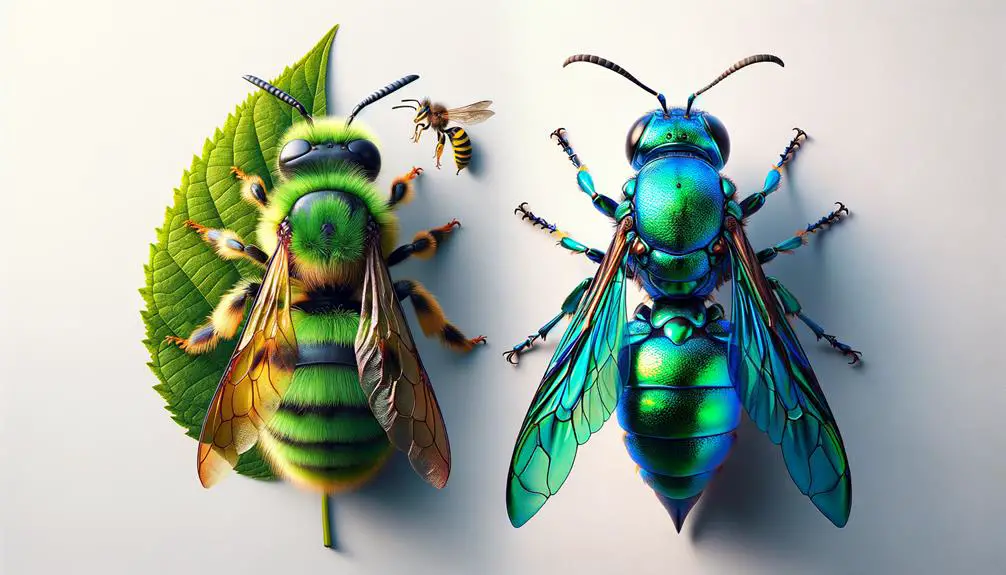
When you compare the physical attributes of the Sweat Bee and the Cuckoo Wasp, striking differences and intriguing similarities emerge.
- Let's start with size. Sweat Bees, belonging to the Halictidae family, vary in size, with most measuring between 5 to 10 millimeters. In contrast, Cuckoo Wasps, falling under the Chrysididae family, tend to be slightly larger, with an average length of 6 to 15 millimeters.
- Moving onto color, Sweat Bees exhibit a broad range from metallic greens and blues to dull browns, while Cuckoo Wasps showcase an iridescent display of metallic blues, greens, and reds which exhibit a captivating jewel-like quality.
- Lastly, let's consider body structure. Sweat Bees have a somewhat slender and elongated body, while Cuckoo Wasps are characterized by their robust, almost armor-like exoskeleton and a dome-shaped abdomen.
In essence, while both species have their unique aesthetic qualities, they share a common trait of exhibiting vibrant hues that make them stand out in their respective habitats. So, while you're observing these tiny creatures, it's their size, color, and body structure that'll help you distinguish a Sweat Bee from a Cuckoo Wasp.
Survival Tactics: A Focus
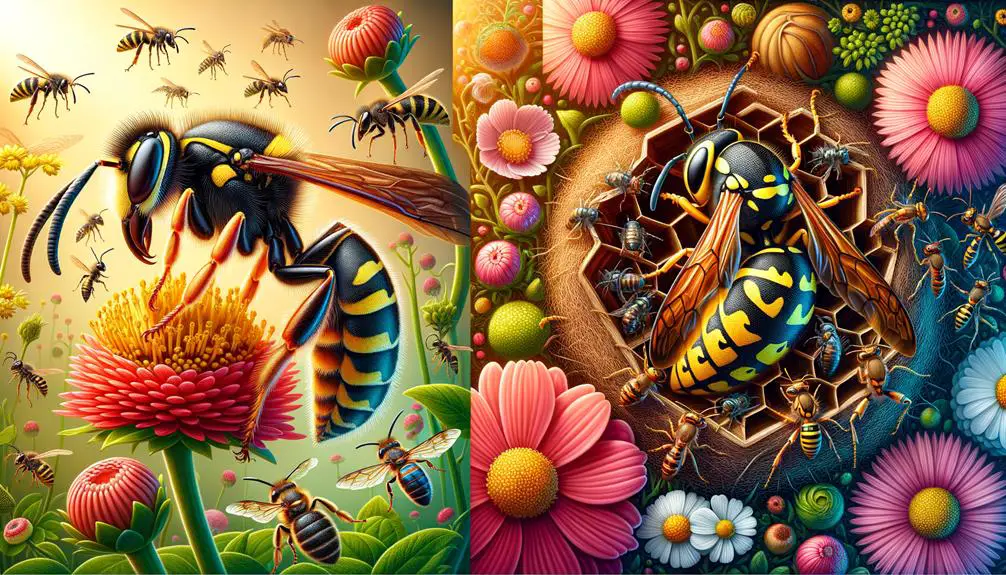
Let's now delve into the fascinating survival strategies employed by both Sweat Bees and Cuckoo Wasps, focusing on their distinctive behaviors and adaptations that aid their survival in diverse ecosystems.
Sweat Bees, for instance, have developed a unique survival tactic of collecting human sweat. This behavior not only provides them with essential salts but also serves as a protective mechanism against predators. They're less likely to be pursued if they're on a human.
Cuckoo Wasps, on the other hand, exhibit parasitic behavior. They lay their eggs in other insects' nests, allowing their offspring to consume the host's larva for sustenance. This strategy ensures their progeny's survival even in resource-scarce environments.
Here's a quick comparison table:
Species | Survival Strategy |
|---|---|
Sweat Bee | Collecting human sweat for essential salts, protection from predators |
Cuckoo Wasp | Parasitic behavior, using host's resources for offspring |
This look into survival tactics underscores the adaptability of these insects, demonstrating that survival isn't determined by size or strength, but by an organism's ability to adapt to its environment.
Impact on Ecosystem Balance
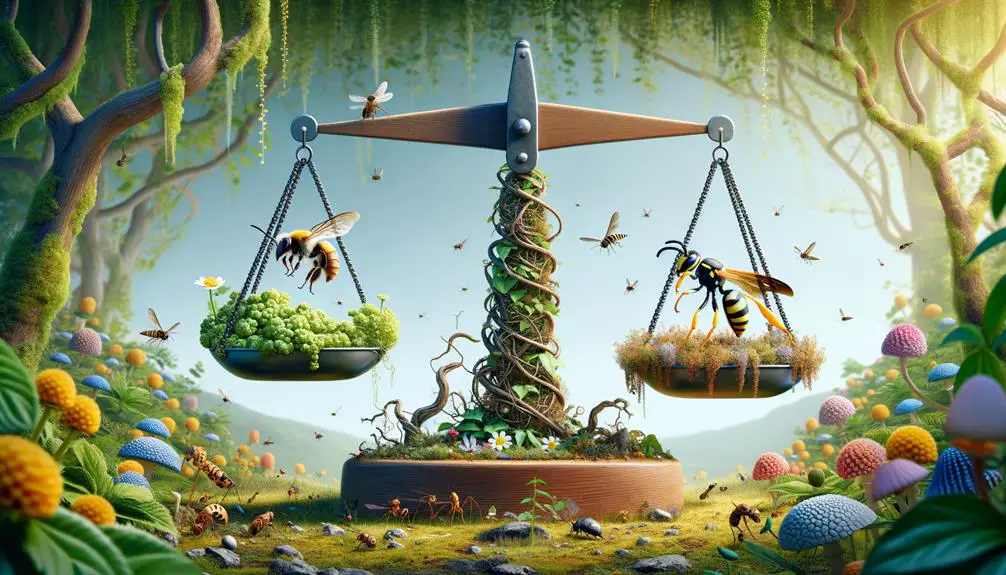
Understanding the survival tactics of Sweat Bees and Cuckoo Wasps provides a crucial insight into their role in maintaining ecosystem balance. They're not just buzzing around aimlessly, you know. These tiny insects have significant roles within our ecosystem.
- Pollination: Sweat Bees are among the world's primary pollinators. They're crucial to the survival of various plant species. That's your food and oxygen right there, being facilitated by these little heroes. Pollination also maintains biodiversity, contributing to a healthy and balanced ecosystem.
- Pest Control: Cuckoo Wasps are known as parasitoids. They're not as sweet as the Sweat Bees, laying their eggs in the nests of other insects. However, this behavior helps control the population of certain pests, contributing to the ecosystem's overall equilibrium.
- Food Source: Both Sweat Bees and Cuckoo Wasps serve as food for various species. Their survival, therefore, is linked to the survival of other creatures, reinforcing the complex web of life.
Conclusion
In conclusion, you've explored the worlds of sweat bees and cuckoo wasps, each with their unique appearances and survival strategies. You've seen how sweat bees contribute to pollination, while cuckoo wasps play a role in controlling populations. Both are vital for maintaining ecosystem balance.
So, next time you spot these tiny creatures, remember, they're not just insects, they're key players in our environment's health. It's a small reminder of the intricate web of life we're part of.

